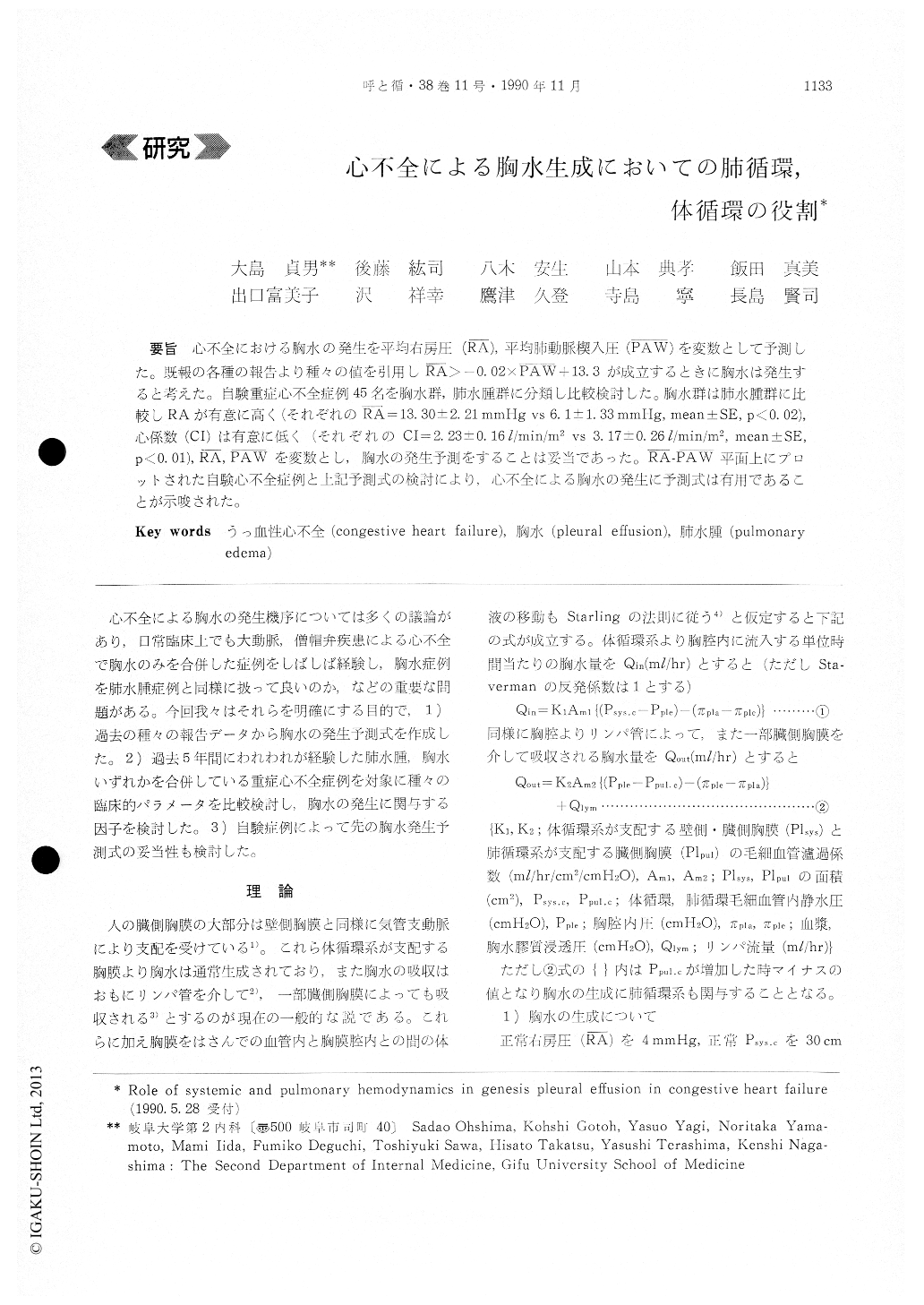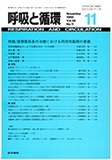Japanese
English
- 有料閲覧
- Abstract 文献概要
- 1ページ目 Look Inside
心不全における胸水の発生を平均右房圧(【RA】),平均肺動脈模入圧(PA脚)を変数として予測した。既報の各種の報告より種々の値を引用し【RA】>−0.02×【PAW】+13.3が成立するときに胸水は発生すると考えた。自験重症心不全症例45名を胸水群,肺水腫群に分類し比較検討した。胸水群は肺水腫群に比較しRAが有意に高く(それぞれの【RA】=13.30±2.21 mmHg vs 6.1±1.33 mmHg,mean±SE,P<0.02),心係数(CI)は有意に低く(それぞれのCI=2.23±0.16l/min/m2 vs 3.17±0.26l/min/m2,mean±SE,p<0.01),【RA】,【PAW】を変数とし,胸水の発生予測をすることは妥当であった。RA-PAW平面上にプロットされた自験心不全症例と上記予測式の検討により,心不全による胸水の発生に予測式は有用であることが示唆された。
We tried to make an estimate of how pleural effusion occur in congestive heart failure, using right atrial peressure (【RA】) and pulmonary arterial wedge pressure (【PAW】) as variables. We calculated the following equation by quoting the data in the past.【RA】>-0.02×【PAW】 13.3. We speculated that when this relationship is satisfied, pleural effusion will appear. We also studied the patients with severe congestive heart failure, dividing them into 2 groups, ie the pleural effusion group (EF) and pulmonary edema group (ED). Compared with ED, EF has a significantly higher RA (RA=6.1±1.33 mmHg in EF and 13.3±2.21mmHg in ED, mean±SE, p<0.02) and a significantly lower cardiac index (3.17±0.26l/minim2 vs 2.23±0.161/min/m2, mean± SE, p<0.01). Therefore, we thought that it was adequate to treat 【RA】 and 【PAW】 as independent variables. These equations appear to be useful in predicting the development of pleural effusion that's based in the plots of our patients on RA-PAW plane and their relationship to our equations.

Copyright © 1990, Igaku-Shoin Ltd. All rights reserved.


